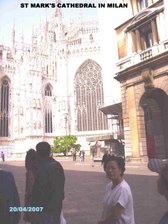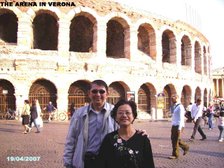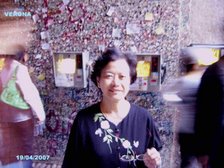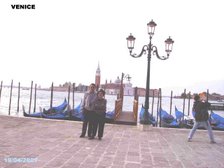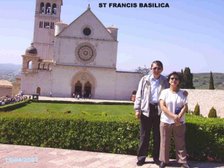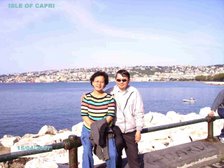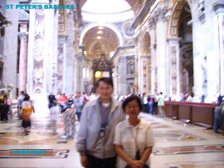OUR TRIP TO ITALY APRIL 2007 -POMPEII
Next we travelled towards Naples to see the ancient ruins of Pompeii well described in the movie "The Last days of Pompeii". It was a long journey and we could see many olive trees and grapes vines along the route. Nearing Naples we could see the majestic Mount Vesuvius which is apparently dormant but still a very active volcano.Finally we came to the entrance of the excavation site of Pompeii.
Pompeii is a ruined Roman city near modern Naples in the Italian region of Campania, in the territory of the commune of Pompei. It, along with Herculaneum, was destroyed, and completely buried, during a catastrophic eruption of the volcano Mount Vesuvius spanning 2 days on 24 August 79 AD.
The volcano collapsed higher roof-lines and buried Pompeii under many meters of ash, and it was lost for nearly 1600 years before its accidental rediscovery in 1748. Since then, its excavation has provided an extraordinarily detailed insight into the life of a city at the height of the Roman Empire.
The town was founded around the 6th century BC by the Osci or Oscans.
Today, Pompeii has become a popular tourist destination; with approximately 2.5 million visitors a year, it is the most popular tourist attraction in Italy. It is now part of a larger Vesuvius National Park and was declared a World Heritage Site by UNESCO in 1997.
When Pompeii was buried under the ash and rubble of Mount Vesuvius, the objects buried beneath it were remarkably well-preserved for thousands of years. The lack of air and moisture allowed for the objects to remain underground with little to no deterioration, which meant that, once excavated, the site had a wealth of sources and evidence for analysis, giving remarkable detail into the lives of the Pompeiians. Weathering, erosion, light exposure, water damage, poor methods of excavation and reconstruction, introduced plants and animals, tourism, vandalism and theft have all damaged the site in some way. Two-thirds of the city has been excavated, but the remnants of the city are rapidly deteriorating.
There is a market with walls depicted with fresco of fishes. Near this was a well preserved body of one of inhabitant of Pompeii. There were statues of some half human half animal god and remarkable well preseved pillars. There was a area which was supposed to be a brothel with rooms depicting frescos of different positions of sex. There was an arena which has converted to allow people to view modern rock concerts during certain festivals.
After a satisfying meal (the best pizza in Italy) at the restaurant outsde the entrance, we retired to our hotel for the night.


